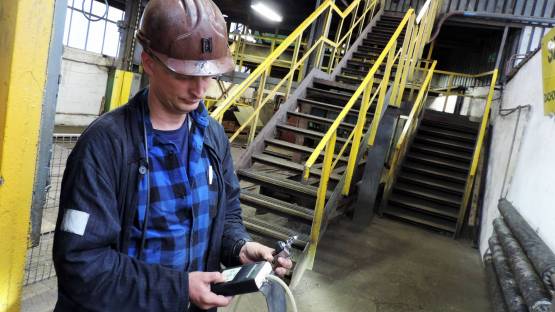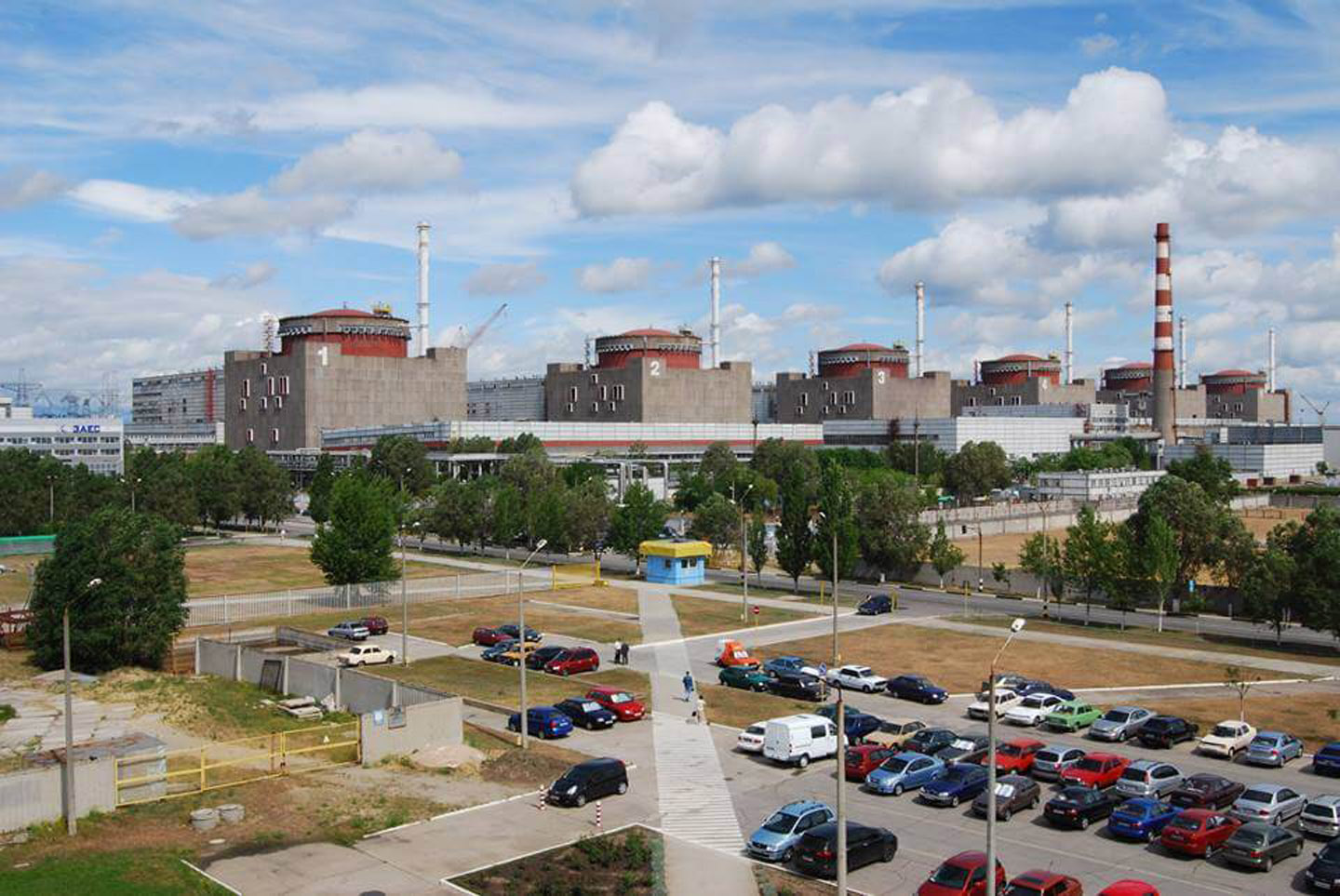The NNSA’s Savannah Blalock announces that the agency has reallocated $10 million to support peaceful uses. (Photo: NNSA)
The Department of Energy’s National Nuclear Security Administration has redirected about $10 million from the International Atomic Energy Agency’s low-enriched uranium fuel bank to efforts supporting the peaceful uses of nuclear technology and to fight cancer.
A release box containing about 15 million sterile male fruit flies is loaded into a Cessna aircraft for release over Colima, Mexico, earlier this year. (Photo: DGSV SENASICA)
Mexican authorities announced last week that the Mediterranean fruit fly, more commonly known as the medfly, had been successfully eradicated in the state of Colima using a nuclear technique described by the International Atomic Energy Agency (IAEA) as “birth control for pests.” Mexico used the sterile insect technique (SIT) in cooperation with the IAEA and the Food and Agricultural Organization of the United Nations (FAO) to protect fruit and vegetable crops, farmers’ livelihoods, and the country’s economy.
A shot from a coal mine in Poland. (Photo: IAEA)
IAEA director general Rafael Mariano Grossi addresses workshop attendees. (Photo: IAEA)
The International Atomic Energy Agency convened a workshop last week to explore how nuclear techniques backed by the IAEA’s Zoonotic Disease Integrated Action (ZODIAC) initiative could be used to avoid outbreaks of monkeypox and Lassa fever. The meeting, held in Vienna, Austria, on the sidelines of the IAEA Board of Governors meeting, was organized to assist countries in using nuclear and related techniques to detect, mitigate, and understand the behavior of the viruses.
“It is important that we are reacting quickly, as things happen. I am happy that concrete work is being carried out on something before it becomes a very difficult problem,” said IAEA director general Rafael Mariano Grossi as he opened the one-day summit.
Denmark’s Risø National Laboratory for Sustainable Energy. The two cylindrical buildings outermost on the peninsula contained the two nuclear reactors DR-2 and DR-3. (Photo: DTU)
An independent review of Denmark’s radioactive waste management program by an International Atomic Energy Agency team found that the country has developed a robust and well-functioning system, but that the national program needs further refinement if it is to be effectively implemented.
The government of Denmark requested the review of its waste management program to fulfil its European Union obligations requiring an independent review of EU member states’ national radioactive waste management programs. The Danish parliament adopted a resolution outlining the policy goals and activities of its national program for safely managing radioactive waste and spent nuclear fuel in 2018.
Ukraine’s president, Volodymyr Zelensky, thanks IAEA director general Rafael Mariano Grossi for the agency’s support, including its April 26 mission to Chernobyl. (Photo: IAEA)
The director general of the International Atomic Energy Agency, Rafael Mariano Grossi, led a mission to Ukraine’s Chernobyl nuclear plant this week to address ongoing radiological safety concerns at the shuttered site following five weeks (February 24–March 31) of Russian military occupation.
The New Safe Confinement structure over the damaged fourth reactor at the Chernobyl nuclear power plant. Photo from 2018.
Ukraine’s nuclear operator, Energoatom, announced yesterday that the Russian military has withdrawn from the Chernobyl plant and surrounding area. “According to the staff of the Chernobyl nuclear power plant, there are now no outsiders on-site,” Energoatom stated in an online post. Russian forces took control of Chernobyl on February 24, day one of the invasion.
In a separate post, the company said that the Russians had formally agreed to return the responsibility for Chernobyl to Ukraine. It shared a scan of a document, with the heading “Act of acceptance and transfer of protection of the Chernobyl nuclear plant,” purportedly signed by a representative of Russia’s National Guard, a representative of Rosatom, Russia’s state atomic energy corporation, and a Chernobyl plant shift manager.
This is the first newsletter of the ANS Rapid Response Taskforce on the Russian invasion of Ukraine. The Taskforce will issue updates as needed.
Energoatom, photo of Rovno (Rivne) NPP. Rivne NPP | Energoatom
External power supplies were restored to the decommissioning Chernobyl facility following repairs of damaged power lines — before being reportedly damaged again, according to Ukraine's transmission system operator Ukrenergo.
At the press conference, Grossi explained that the IAEA has stopped receiving safeguards information from certain monitoring systems installed at Ukrainian nuclear facilities, as indicated by the red dots.
IAEA director general Rafael Mariano Grossi traveled to Antalya, Turkey, on March 10 to meet with Ukrainian foreign minister Dmytro Kuleba and Russian foreign minister Sergei Lavrov to discuss the safety and security of Ukraine's nuclear facilities. After returning to Vienna, Grossi held a press conference at which he said that a “common denominator” had emerged from the discussions and that both sides agree that something needs to be done. “They are both ready to work and to engage with the IAEA,” he said. “So this is a very important building block.”
Energoatom’s Zaporizhzhia plant, in southeastern Ukraine. (Photo: Energoatom)
Latest on Zaporizhzhia: As of this morning, Russian military forces have taken control of the Zaporizhzhia nuclear power plant in Ukraine. The Russian military began shelling the Zaporizhzhia nuclear plant in southeastern Ukraine, resulting in a fire at the site on Thursday.
Energoatom issued this graphic dismissing Russian claims of control of Zaporizhzhia as “fake” on February 28. (Image: Energoatom)
Denying a Russian claim of control of the Zaporizhzhia nuclear power plant, Energoatom earlier today declared that “Russian propaganda media reports that the invaders allegedly took control of the Zaporizhzhia NPP are a cynical fake.” According to Energoatom, all four of its nuclear power plants are under the control of Ukraine and are operating normally with enhanced defenses.
IAEA director general Rafael Mariano Grossi (left) and WHO director general Tedros Adhanom Ghebreyesus. (Photo: IAEA)
The International Atomic Energy Agency has launched the Rays of Hope program to tackle a severe shortage of cancer care capacity in poorer countries. The program’s initial focus will be on Africa, where people often die from the disease because of the lack of access to potentially life-saving nuclear medicine and radiotherapy, according to the IAEA.
A video on the program is available on YouTube.
Schools distributed information about the pilot trial in their communities, and schoolchildren participated in the biweekly release of sterilized male mosquitoes. (Photo: Manuel Fernández, Cuban Agency of Nuclear Energy)
Cuba’s plan to use the sterile insect technique to tackle the spread of dengue—a viral, mosquito-borne disease—relies on expertise and technology from the International Atomic Energy Agency. The technique is not new, having been used to control different insect-vector diseases in diverse regions of the world.
Xiaoluo Wang (right), a fellow under the IAEA Marie Sklodowska-Curie Fellowship Program, graduated last year with a master’s degree in nuclear engineering and is getting work experience at the IAEA's Division of Nuclear Fuel Cycle and Waste Technology. (Photo: A. Tarhi/IAEA)
The International Atomic Energy Agency has selected more than 110 female students from around the world to receive scholarships under its Marie Sklodowska-Curie Fellowship Program.
Launched in 2020 by the IAEA's director general, Rafael Mariano Grossi, the program offers young women an opportunity to pursue studies toward a master’s in the nuclear field by providing financial support and practical experience. Its aim is to help close the gender gap in the traditionally male-dominated nuclear sector, where women make up less than a quarter of the workforce globally, according to data from the World Nuclear Association.

















